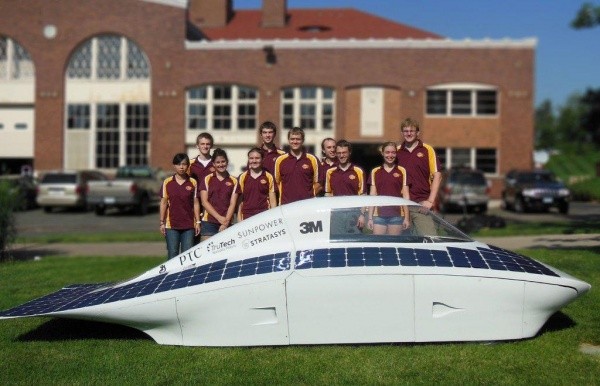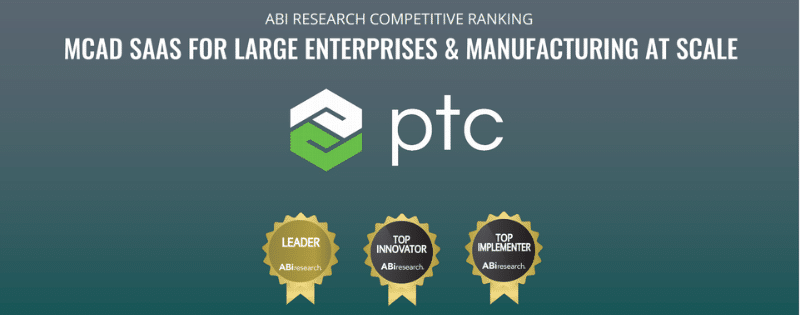Since 1991, the student-run Solar Vehicle Project at the University of Minnesota has been designing highly energy-efficient solar vehicles. Their latest creation, a sleek silver 4-wheeled vehicle seemingly out of pure science fiction, was put through paces in a 3,000-kilometer trek across Australia; and most recently finished second in cross-country race the 2014 American Solar Challenge.
The various teams within the Solar Vehicle Project work together from design to construction and the actual race. The students’ expertise varies from aerodynamics, solar arrays and electrical and mechanical engineering to business strategy. They work together to ensure the car is lightweight, fast, safe, and above all, highly energy efficient.
Thanks to a sponsorship from PTC Creo, the team was able to go from design to construction in just 10 months. Here’s how the team employed Creo in each phase of the process.
Design
The vehicle’s solar panel-covered shell, which helped reduce drag, was the product of the aerospace team. They were worked on important safety components, such as the carbon fiber chassis and the roll cage.
The team deployed Creo to test the vehicle’s various elements prior to construction, which helped make sure it could endure impact from any direction. This also helped them optimize key components’ placement in the design, like the motor and the batter box.
Productivity
Using Creo also helped the team fit the components together correctly. In the words of the Solar Vehicle Project’s mechanical team lead, Tono Carlstrom, “I designed all the parts that hold the batteries in place. I modeled them in Creo, and I only had one chance to get it right. Then we used 3D printing and the batteries and housing fit in perfectly.”
Collaboration
The project’s teams also used Creo to work together on design plans and make sure the process went smoothly. “We can easily access different revisions, make sure everything is up to date, keep everything on track, and have everyone constantly checking each other, to see if they are making sense or not,” Carlstrom said. “Without Creo, it would have taken much longer, because we would not be able to coordinate with each other as easily.”
Finishing the Race
The Solar Vehicle Project’s team saw their hard work rewarded when their creation crossed the finish line of the World Solar Challenge. The vehicle exceeded speeds of 80 MPH, an impressive feat for a solar-powered car.
The team counts it as both an engineering feat — they pushed the boundaries of what solar vehicles can do — and an emotional high. Neil Dencklau put it this way: “Running across the finish line was just an unbelievable experience.”
Creo helped them create unforgettable experiences — and an automobile that may change the way we look at solar powered vehicles.
Want to learn more about Creo 3.0’s features and capabilities? Read more about it here. Or why not contact us.


